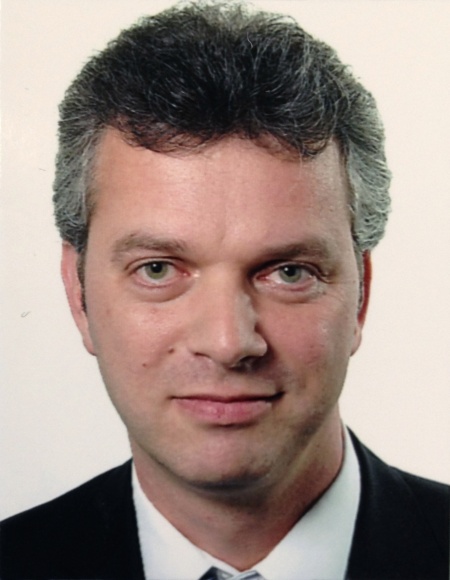Kostal and Infineon Give the Car a 6th Sense: Camera-based Driver Assistance System Increases Traffic Safety
Joint press release of Kostal and Infineon Technologies
Munich and Luedenscheid, Germany – September 15, 2015 – Throughout Europe 25,700 people were killed on the roads last year – an average of 70 traffic fatalities a day. Most of these accidents happened because the motorists weren’t paying attention. A new system has been designed to assist the driver and significantly reduce the number of accidents. At the 2015 International Motor Show (IAA), Leopold Kostal GmbH & Co. KG, is presenting a camera-based driver assistance system with know-how from Infineon Technologies AG (FSE: IFX / OTCQX: IFNNY).
This system detects whether the driver is showing signs of drowsiness (nodding off) or is distracted. And the car instantly responds – with a vibrating seat or a warning tone, for instance. The less attentive the driver gets, the more attentive the car gets. In order to respond quickly and accurately, the assistance and the emergency braking systems can automatically activate in advance of a potential emergency.
“For semi-autonomous or autonomous driving, the assistance system of the vehicle needs to know the state of the driver at all times,” says Frank Blaesing, Head of Innovation Management and Advanced Engineering at Kostal. “It needs to know if and how well the driver is informed about what’s happening on the road at that moment. This information is especially needed when the control over the vehicle needs to be turned back to the driver in a complex traffic situation.”
“We want to make driving safer for all road users,” says Jochen Hanebeck, who heads the Automotive division at Infineon Technologies. “Our chips help to reduce the number of serious road accidents. For us, the collaboration with Kostal is a significant contribution to assisted driving, with all its safety and comfort advantages.”
3D camera keeps watch over the eyelids
By 2018, cars with the 3D camera system from Kostal will be running off the assembly line. The optical system is only 49 by 29 millimeters (about 2 by 1 inches) in size and is embedded into the dashboard: Through the steering wheel, it “looks” front-facing at the driver’s body and head. It records the exact head position and recognizes the blink of an eye even through glasses or sunglasses.
The 3D camera uses infrared light and works even under changing light conditions or in the dark. It contains the Real3™ 3D image sensor chip from Infineon, which reliably records more than 100,000 pixels 50 times a second. For each pixel it simultaneously recognizes the distance and the brightness value. From the depth image of the distance data and the amplitude image of the brightness values, the 3D camera system then identifies 49 predetermined points in the driver's face such as eyes, eyebrows, mouth or tip of the nose. Algorithms use this data to calculate the driver’s attentiveness. If, for example, the system detects signs of fatigue in the driver, it initiates the countermeasures.
In addition, knowledge of the exact position of the driver’s head helps to project navigation information in the windshield through head-up displays, so that it’s right in the driver’s line of sight, seamlessly fitting into the streetscape in front of him. The driver will thus always see the navigation arrow in front of him at the same place in the road – regardless of how he holds his head.
The 6th sense: 3D vision thanks to REAL3 3D image sensor chip
The heart of the camera system is the 3D image sensor chip. It is highly complex. At only 7 by 8 millimeters (.28 by .31 inches), it contains a photosensitive pixel array with a resolution of 352 x 288 pixels (more than 100,000 pixels), intelligent control logic and a several analog-to-digital converters. These convert the analog image data (distance and brightness) into digital data in less than a thousandth of a second. The data is then processed in the 3D camera’s application processor. The REAL3 image sensor chip is based on the Time-of-Flight (ToF) principle, which measures the time it takes for the infrared light to go from the camera to the object and back. This time relay is directly related to the distance of the object. Compared to other 3D measurement methods, with ToF, the depth data is measured directly and doesn’t need to be determined via complex algorithms. Furthermore, at the end of their production process, 3D cameras with Real3 can be calibrated easily and permanently and only need one lens (monocular camera architecture) to be completed. Therefore, they are relatively small and impervious to vibrations in the vehicle.
Another advantage of the ToF principle: With its modulated infrared light, the 3D camera is virtually independent of the ambient light. The REAL3 image sensor chip provides good quality data even in the dark and at highly varying degrees of sunlight. The robustness to ambient light irradiation is supported by the Suppression of Background Illumination (SBI) function. This extends the dynamic range for each of the more than 100,000 pixels of the 3D sensors so that it properly recognizes its distance and brightness data. SBI is supplied by pmdtechnologies GmbH, the development partner of Infineon in the ToF technology and the 3D image sensor chips.
Autonomous and semi-autonomous driving make extras important
Because of their high data quality, 3D ToF cameras aren’t in the vehicle just for detecting head position and blinking. They can be used for controlling infotainment systems or the air conditioning with hand movement or a body gesture. For example, the vehicle could set the airbags individually for each passenger. In addition, new assistance and safety functions outside the vehicle are possible, such as a door opening assistance that prevents you from bumping the car door against another car, wall or ceiling when parking at a commercial parking garage or at home.
Kostal sees itself as a pioneer in advanced driver assistance with 3D ToF cameras. Since 2011 Kostal and Infineon have been working closely together with 3D image sensor chips and 3D ToF cameras.
Availability
The 3D camera from Kostal can be easily adapted to car manufacturers’ individual requirements, and could be built into new cars by as early as 2018. The 3D image sensor chips from Infineon are available for consumer applications in high volumes as bare die variants. They already exist for automotive applications today as bare die chips and starting from the fourth calendar quarter of 2015 in a 10 by 10 millimeters (.4 by .4 inches) package (PG LFBGA-84).
Further information
With Infineon as one of its technology partners for the future of driver assistance, Kostal is presenting its 3D camera system for driver monitoring and other innovations under the motto “Mechatronics for the People!” at the 66th International Motor Show in Hall 8 at Booth A01 (IAA, September 15-27, 2015, in Frankfurt on the Main, Germany).
Technical information about the REAL3 image sensor chips from Infineon is available at www.infineon.com/3d-imaging.
About Kostal
Because the whole is greater than the sum of its parts, for Kostal, the integration of the skills of many disciplines is a critical success factor for solving complex customer requirements. Mechatronic modules, reliable control units and intuitive control panels are among Kostal’s core competencies. With these, Kostal covers the entire value range of global production.
The family-held enterprise was founded in Lüdenscheid in 1912. In Kostal, the experience in automotive functions gained over decades and at the same time the high level of innovation and development expertise merge, giving it an extraordinary ability in system integration. Kostal employs more than 16,000 employees at 38 locations in 17 countries. In the past fiscal year it achieved a turnover of 2.1 billion euros. You can find more information about Kostal at www.kostal.com.
Press Contact at Kostal
Leopold Kostal GmbH & Co. KG
Frauke Loewen, Media Relations
Telefon: +49 2351 16 - 2155
Email: f.loewen@kostal.com
About Infineon
Infineon Technologies AG is a world leader in semiconductor solutions that make life easier, safer and greener. Microelectronics from Infineon is the key to a better future. In the 2014 fiscal year (ending September 30), the company reported sales of Euro 4.3 billion with about 29,800 employees worldwide. In January 2015, Infineon acquired US-based International Rectifier Corporation with revenues of USD 1.1 billion (fiscal year 2014 ending June 29) and approximately 4,200 employees.
Infineon is listed on the Frankfurt Stock Exchange (ticker symbol: IFX) and in the USA on the over-the-counter market OTCQX International Premier (ticker symbol: IFNNY).
Follow us: twitter.com/Infineon - facebook.com/Infineon - plus.google.com/+Infineon
Information Number
INFATV201509-080
Press Photos
-
 Jochen Hanebeck, President of the Automotive division at Infineon Technologies AG: “Our chips help to reduce the number of serious road accidents. For us, the collaboration with Kostal is a significant contribution to assisted driving, with all its safety and comfort advantages.”Hanebeck_Jochen
Jochen Hanebeck, President of the Automotive division at Infineon Technologies AG: “Our chips help to reduce the number of serious road accidents. For us, the collaboration with Kostal is a significant contribution to assisted driving, with all its safety and comfort advantages.”Hanebeck_JochenJPG | 323 kb | 823 x 1140 px
-
 Frank Blaesing, Head of Innovation Management and Advanced Engineering at Kostal: “It needs to know if and how well the driver is informed about what’s happening on the road at that moment. This information is especially needed when the control over the vehicle needs to be turned back to the driver in a complex traffic situation.”Blaesing_Frank
Frank Blaesing, Head of Innovation Management and Advanced Engineering at Kostal: “It needs to know if and how well the driver is informed about what’s happening on the road at that moment. This information is especially needed when the control over the vehicle needs to be turned back to the driver in a complex traffic situation.”Blaesing_FrankJPG | 872 kb | 1180 x 1522 px
